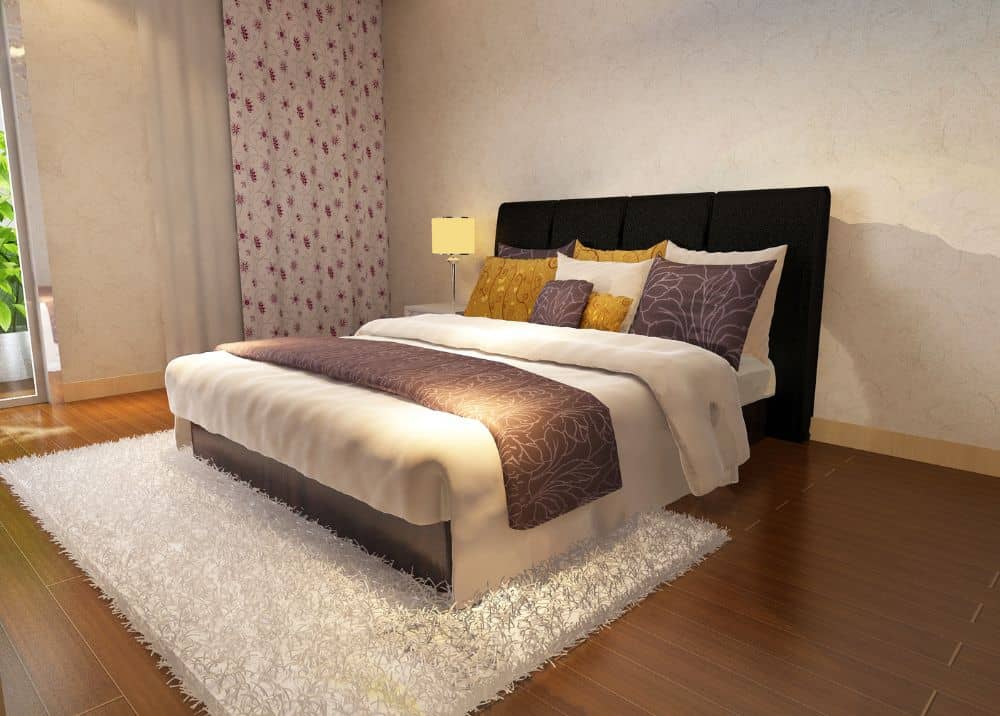Table of Contents

This is just a quick unadorned list of the different bed frame types.
Choosing the perfect frame type and design are a critical decisions when it comes to creating a comfortable and stylish bedroom. Bed frames not only provide essential support for your mattress but also contribute to the overall aesthetic and functionality of your space. In this article, we’ll explore various types of bed designs and frames, their pros and cons, weight limitations, and other key details to help you make an informed decision.
With many styles available, choosing the right bed frames can enhance your bedroom’s decor.
1. Platform Bed Frames
Description: Platform bed frames are low-profile frames with a solid or slatted base designed to support a mattress without the need for a box spring.
Pros:
- Sleek Design: Ideal for modern and minimalist aesthetics.
- Cost-Effective: No box spring required, reducing overall costs.
- Storage-Friendly: Many models include built-in storage drawers.
- Sturdy Base: Excellent support for various mattress types, including memory foam and latex.
Cons:
- Low Height: May be inconvenient for individuals who have difficulty getting in and out of bed.
- Weight Limitations: Weight capacity can vary, typically ranging from 500 to 1,000 pounds, including the mattress and sleepers.
2. Metal Bed Frames
Description: Metal bed frames are constructed with materials such as steel or iron and come in a variety of styles, from ornate designs to industrial chic.
Pros:
- Durability: Resistant to wear and tear, making them long-lasting.
- Versatility: Available in numerous styles to match various décor themes.
- Lightweight: Easier to move compared to wooden frames.
Cons:
- Squeaking: Metal frames can sometimes become noisy over time.
- Weight Limitations: Usually support around 500 to 800 pounds, depending on construction quality.
- Cold Appearance: May feel less cozy than wooden alternatives.
3. Wooden Bed Frames
Description: Wooden beds are classic choices made from hardwoods (oak, maple, cherry) or softwoods (pine, cedar).
Pros:
- Timeless Appeal: Adds warmth and elegance to any bedroom.
- Sturdiness: High-quality wood frames are extremely durable.
- Customizable: Can be painted or stained to match your style.
Cons:
- Cost: Hardwood frames tend to be expensive.
- Weight: Heavier than metal frames, making them harder to move.
- Weight Limitations: Can typically hold up to 1,000 pounds or more, but this varies with design and construction.
4. Adjustable Bed Frames
Description: Adjustable beds allow users to modify the position of the mattress by raising or lowering the head and foot sections.
Pros:
- Health Benefits: Helps alleviate issues like back pain, acid reflux, and snoring.
- Luxury: Often includes features like massage functions and USB ports.
- Compatibility: Works with a variety of mattress types.
Cons:
- Cost: Significantly more expensive than traditional frames.
- Heavy: Difficult to move due to integrated mechanics.
- Weight Limitations: Typically supports around 650 to 850 pounds, including the mattress.
5. Canopy Bed Frames
Description: Canopy beds feature four tall posts connected by beams, often draped with fabric for a luxurious look.
Pros:
- Statement Piece: Creates a dramatic focal point in the bedroom.
- Privacy: Fabric drapes can offer added seclusion.
- Customizable: Can change the look by swapping out fabric.
Cons:
- Size: Requires a large bedroom to avoid feeling cramped.
- Weight: Heavy and difficult to assemble or move.
- Weight Limitations: Generally supports 500 to 800 pounds, depending on materials and design.
6. Storage Bed Frames
Description: Storage beds incorporate built-in drawers or compartments beneath the mattress, offering additional space-saving solutions.
Pros:
- Space-Saving: Ideal for small bedrooms or minimalistic living.
- Multi-Functional: Combines storage and sleeping solutions.
- Stylish: Available in various materials and designs.
Cons:
- Cost: More expensive than standard frames.
- Weight: Heavier due to integrated storage.
- Weight Limitations: Typically supports 500 to 1,000 pounds, including sleepers and stored items.
7. Sleigh Bed Frames
Description: Sleigh beds have a distinctive curved headboard and footboard, resembling a sled.
Pros:
- Classic Look: Timeless and elegant design.
- Sturdy: Often made of solid wood, ensuring durability.
- Comfortable Backrest: Curved headboard is great for sitting up in bed.
Cons:
- Bulk: Large and heavy, making it unsuitable for small spaces.
- Cost: High-quality sleigh beds can be pricey.
- Weight Limitations: Typically supports 600 to 1,000 pounds, depending on materials.
Key Considerations When Choosing a Bed Frame
- Weight Capacity: Ensure the frame can support the combined weight of the mattress, sleepers, and any additional items.
- Room Size: Consider the dimensions of your bedroom and how much space the frame will occupy.
- Style and Aesthetic: Choose a frame that complements your bedroom decor.
- Budget: Determine how much you’re willing to invest, factoring in potential additional costs like a box spring or assembly.
- Material: Consider the durability, maintenance, and feel of different materials.
Conclusion
Selecting the right bed frame involves balancing functionality, style, and budget. From the sleek simplicity of platform frames to the luxurious appeal of canopy beds, there’s a bed frame for every preference and need. Evaluate the pros and cons of each type, paying close attention to weight limitations and other practical details, to find the perfect foundation for restful nights and stylish mornings.
